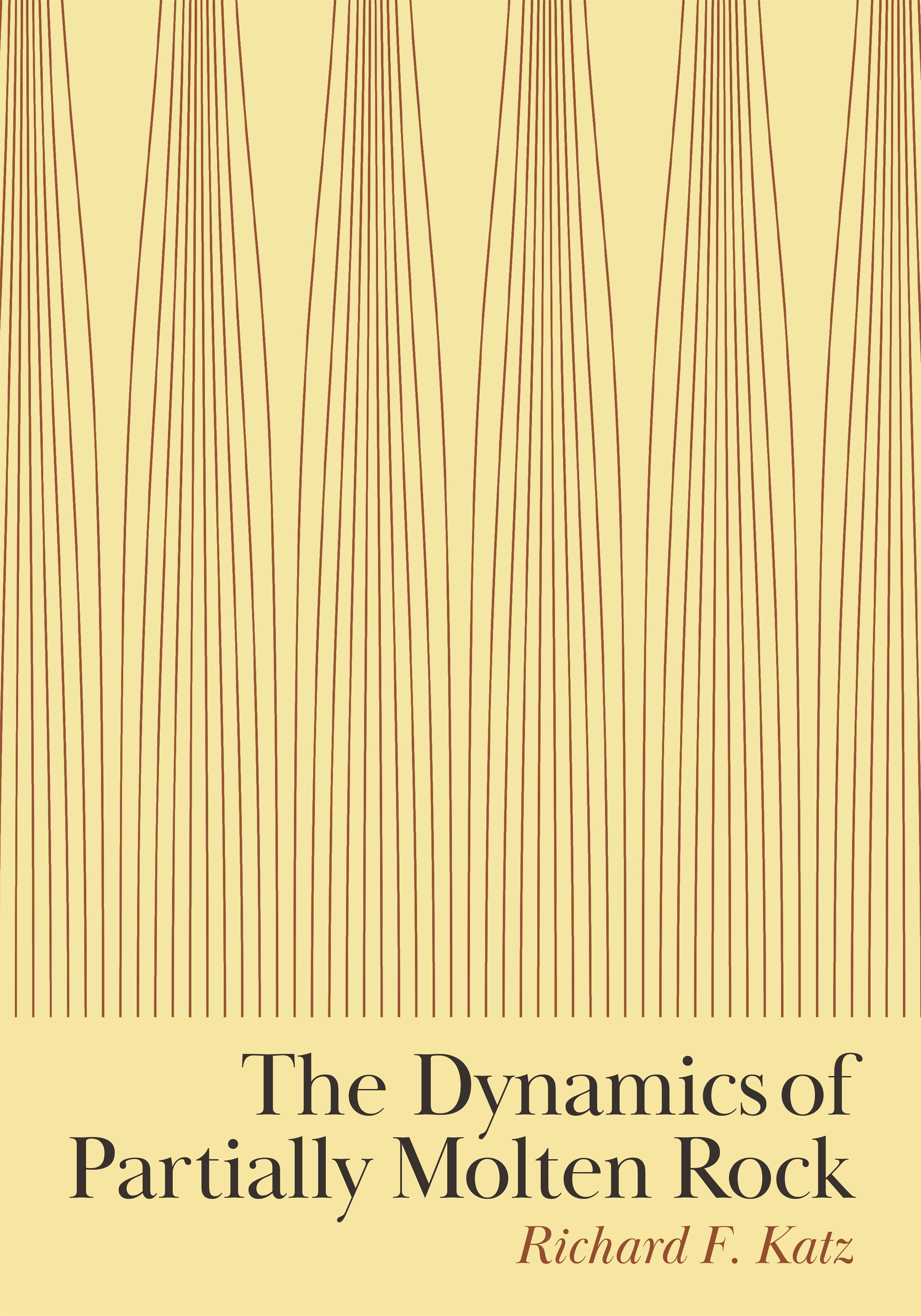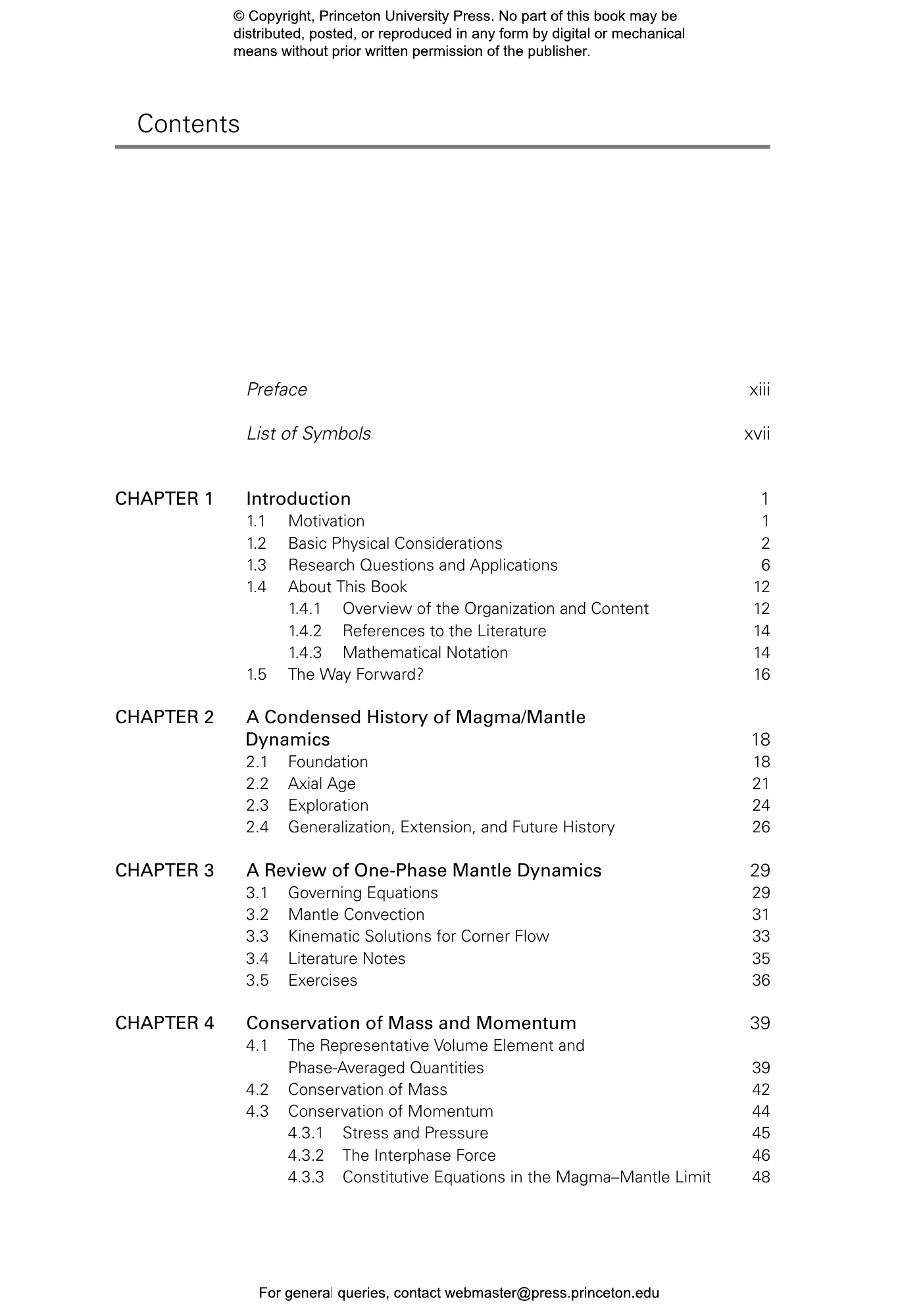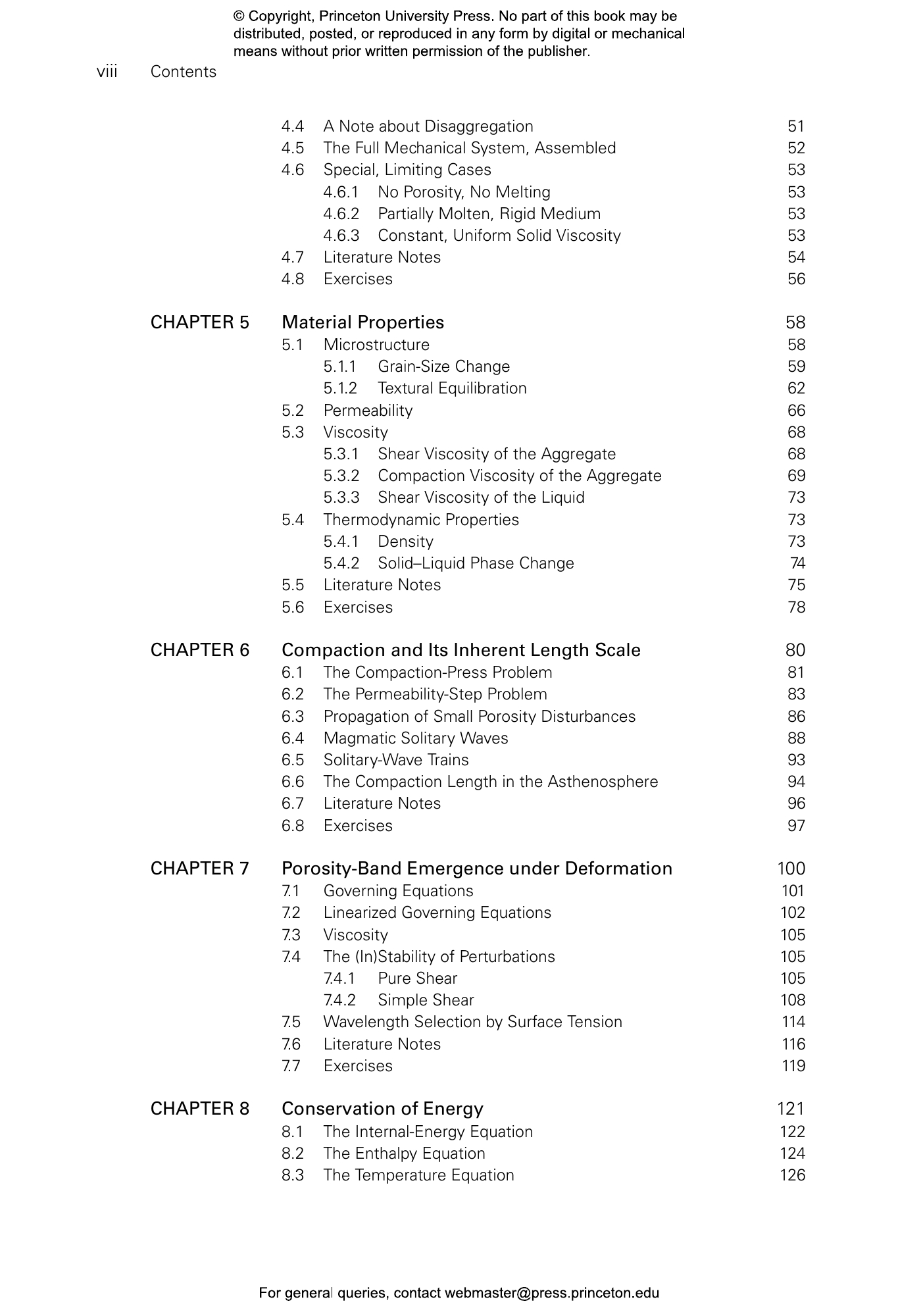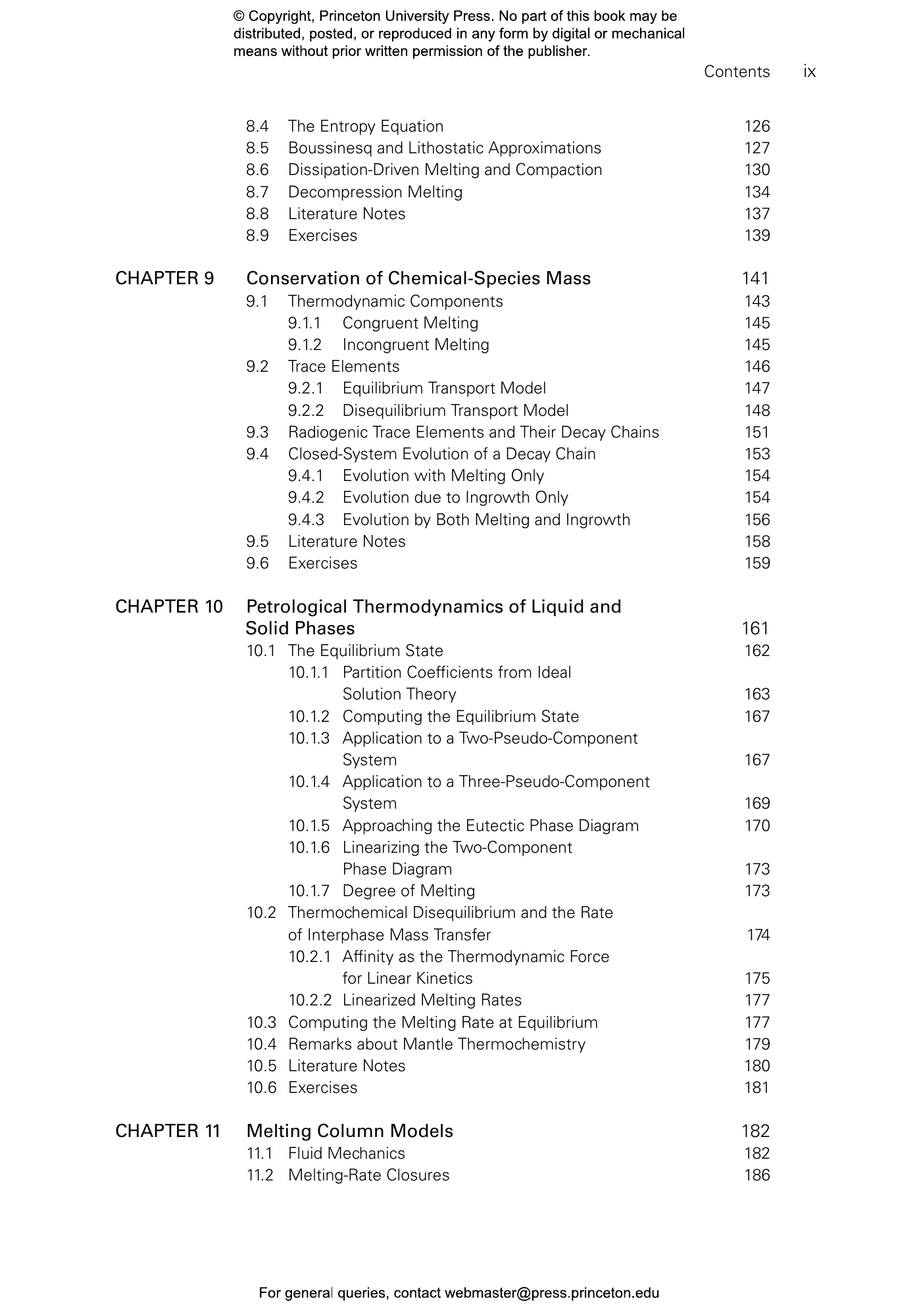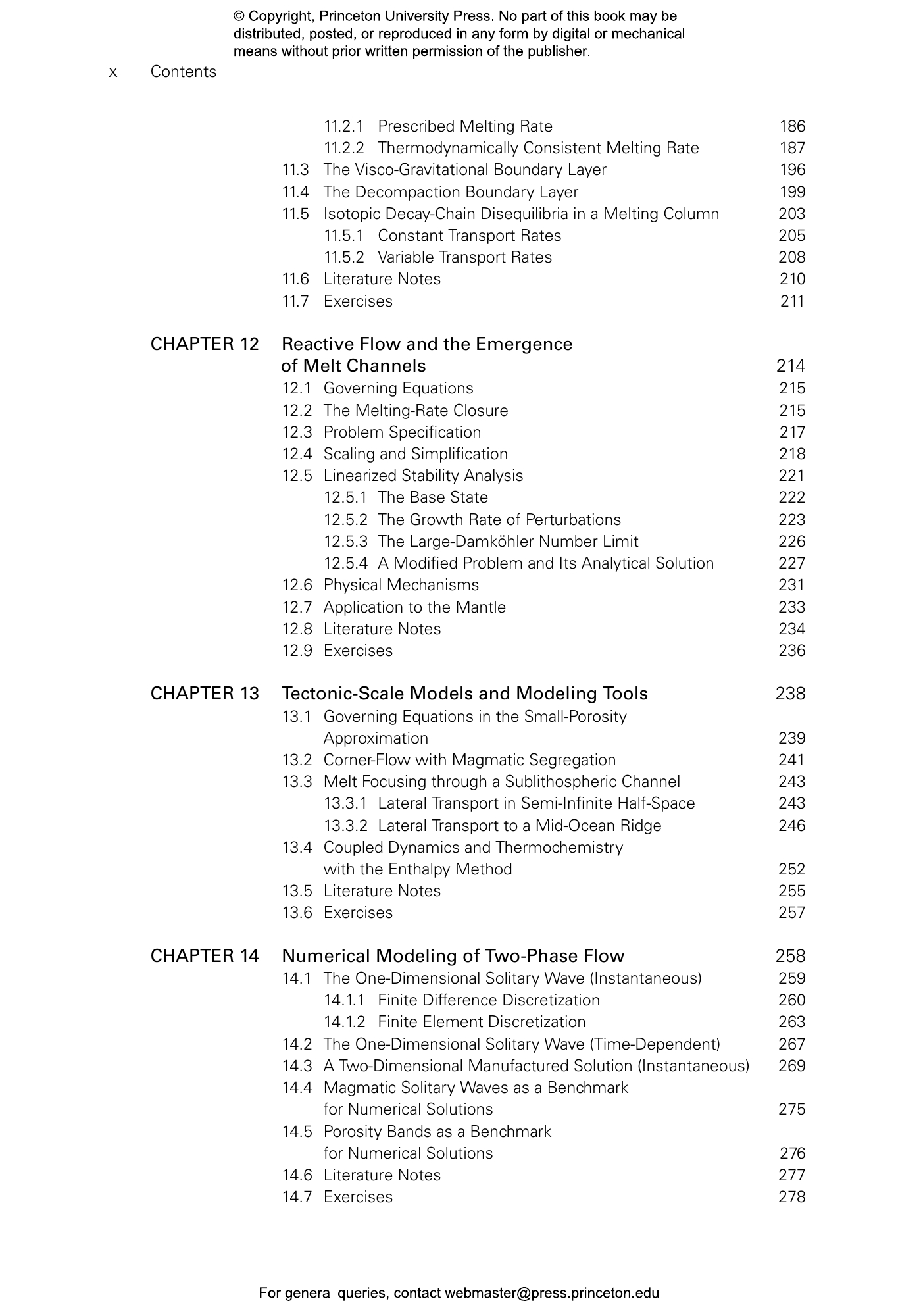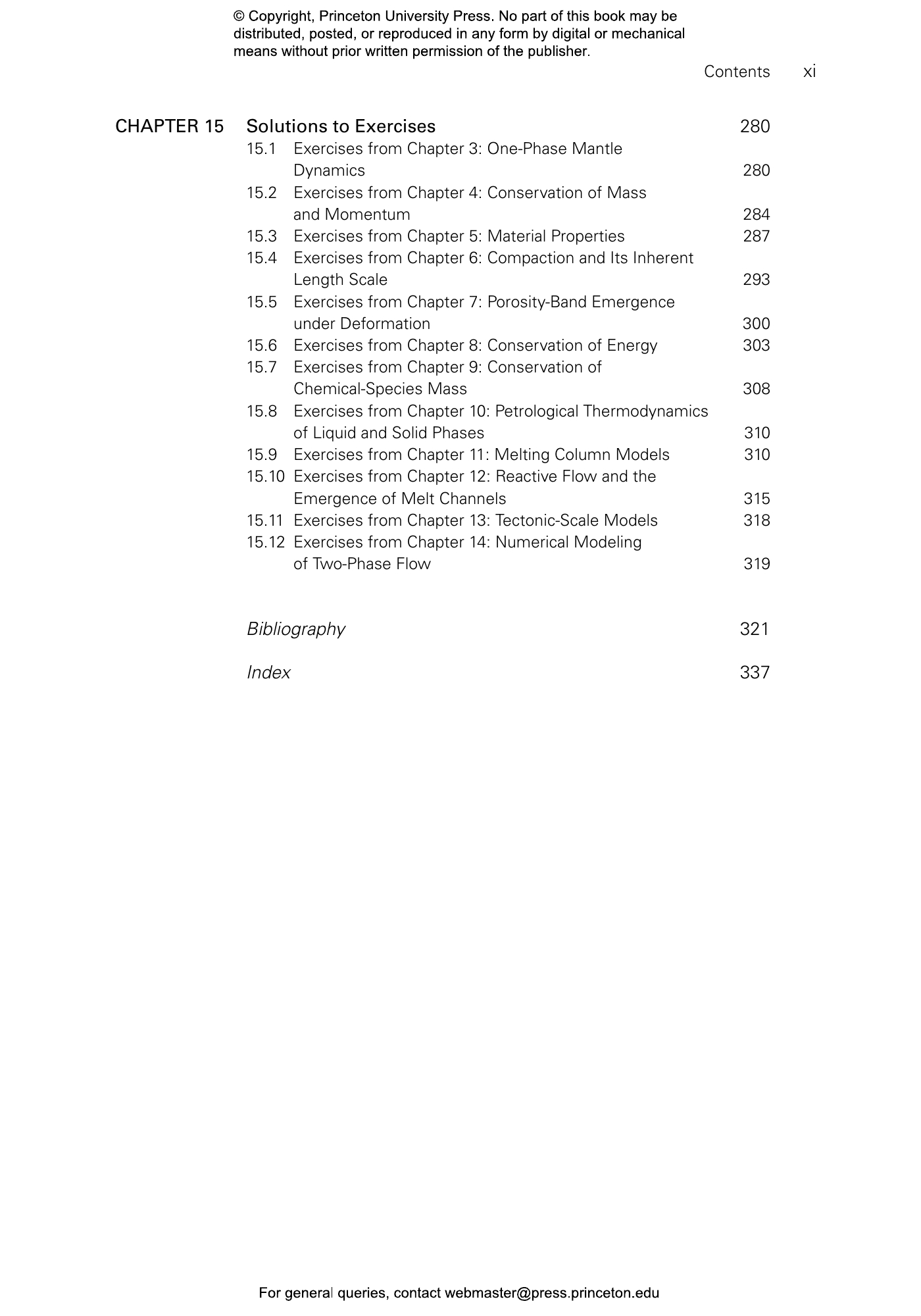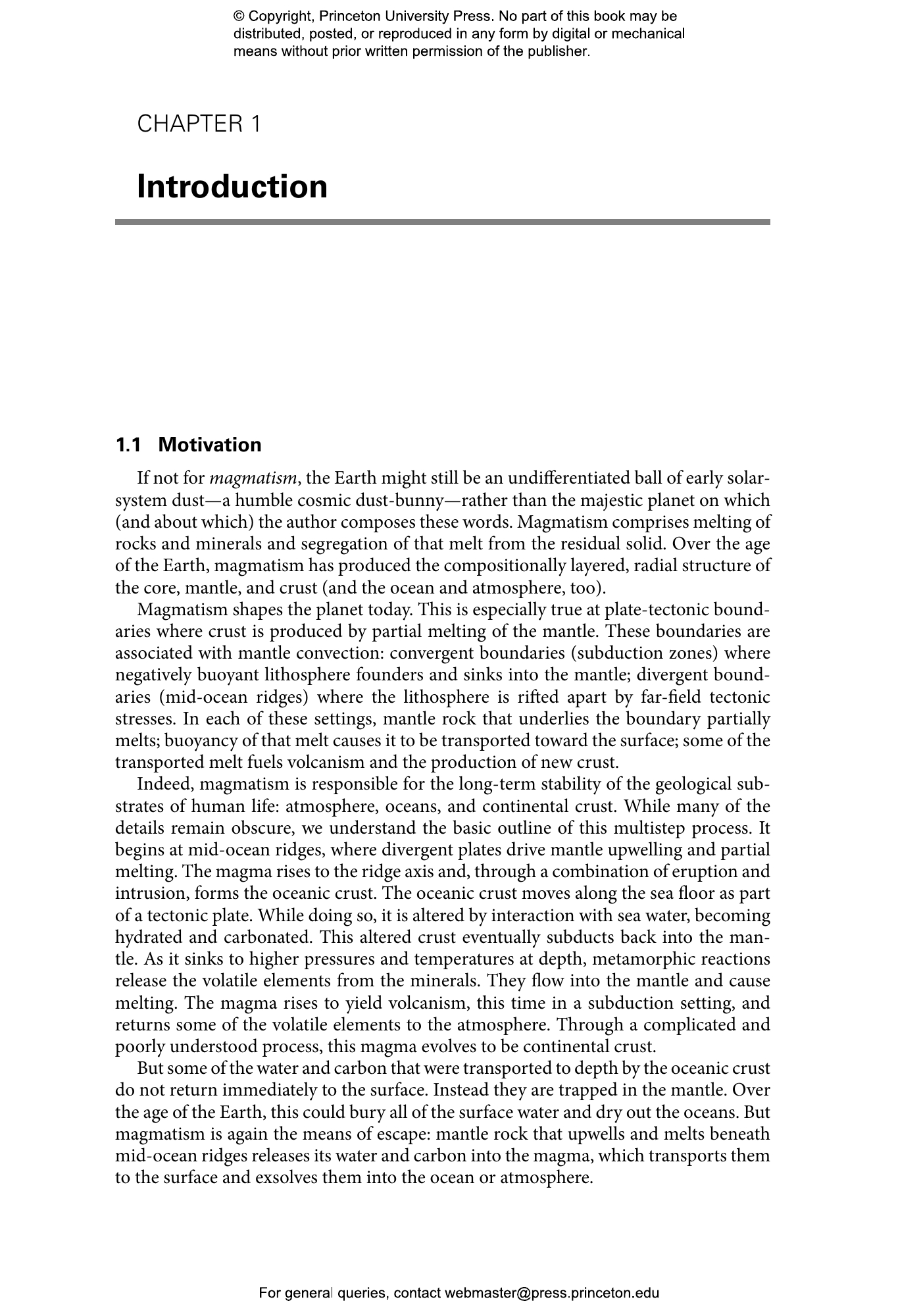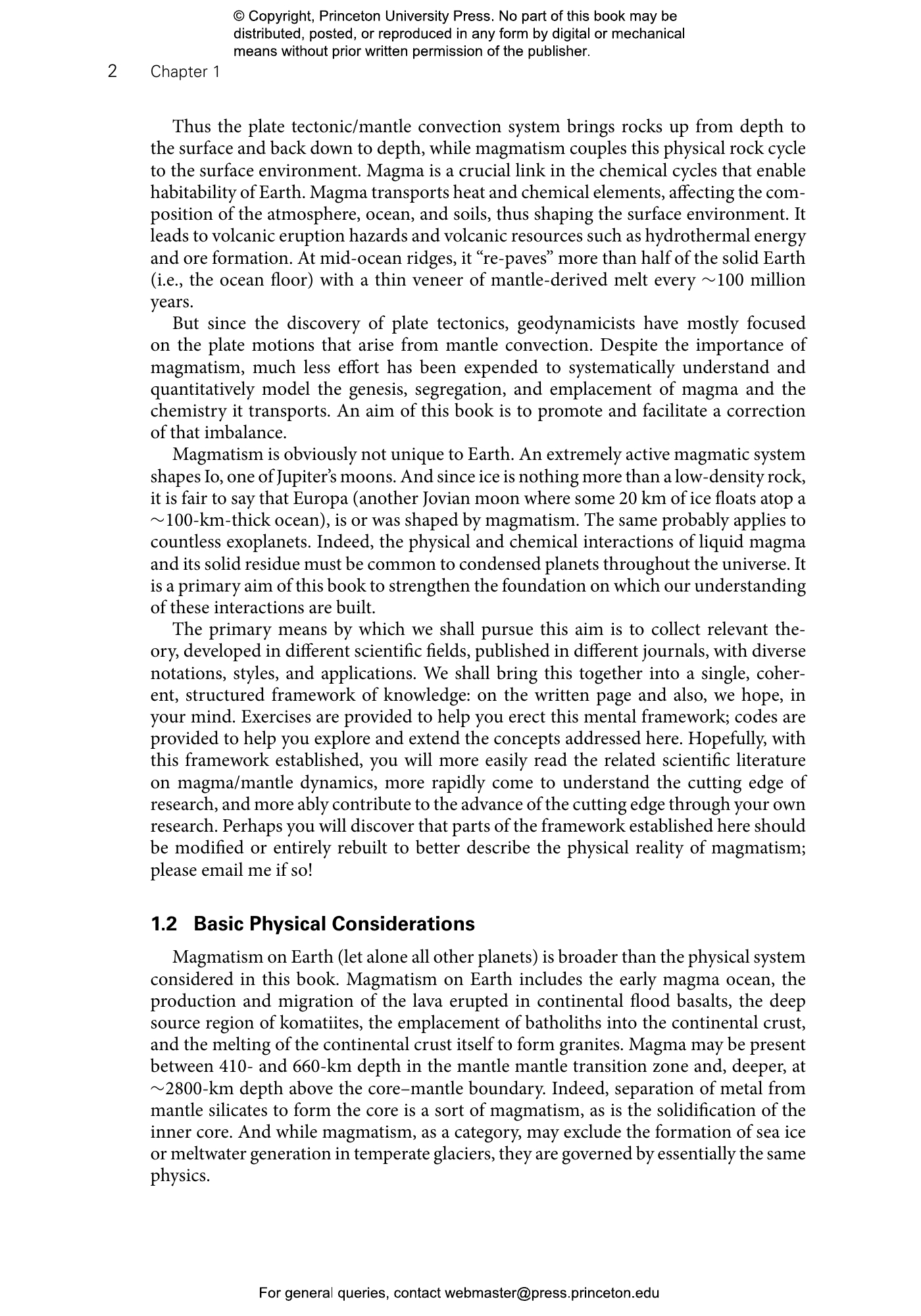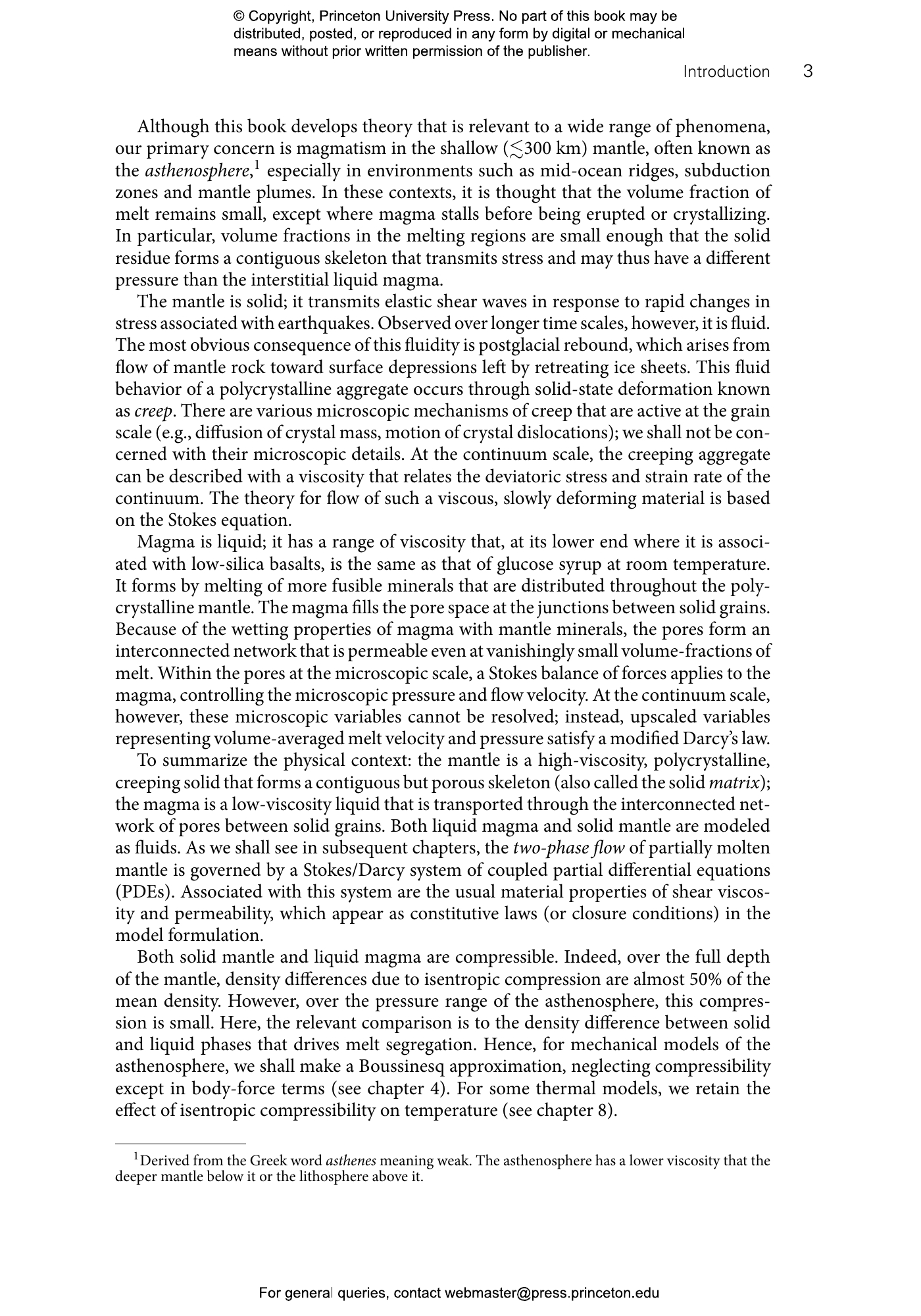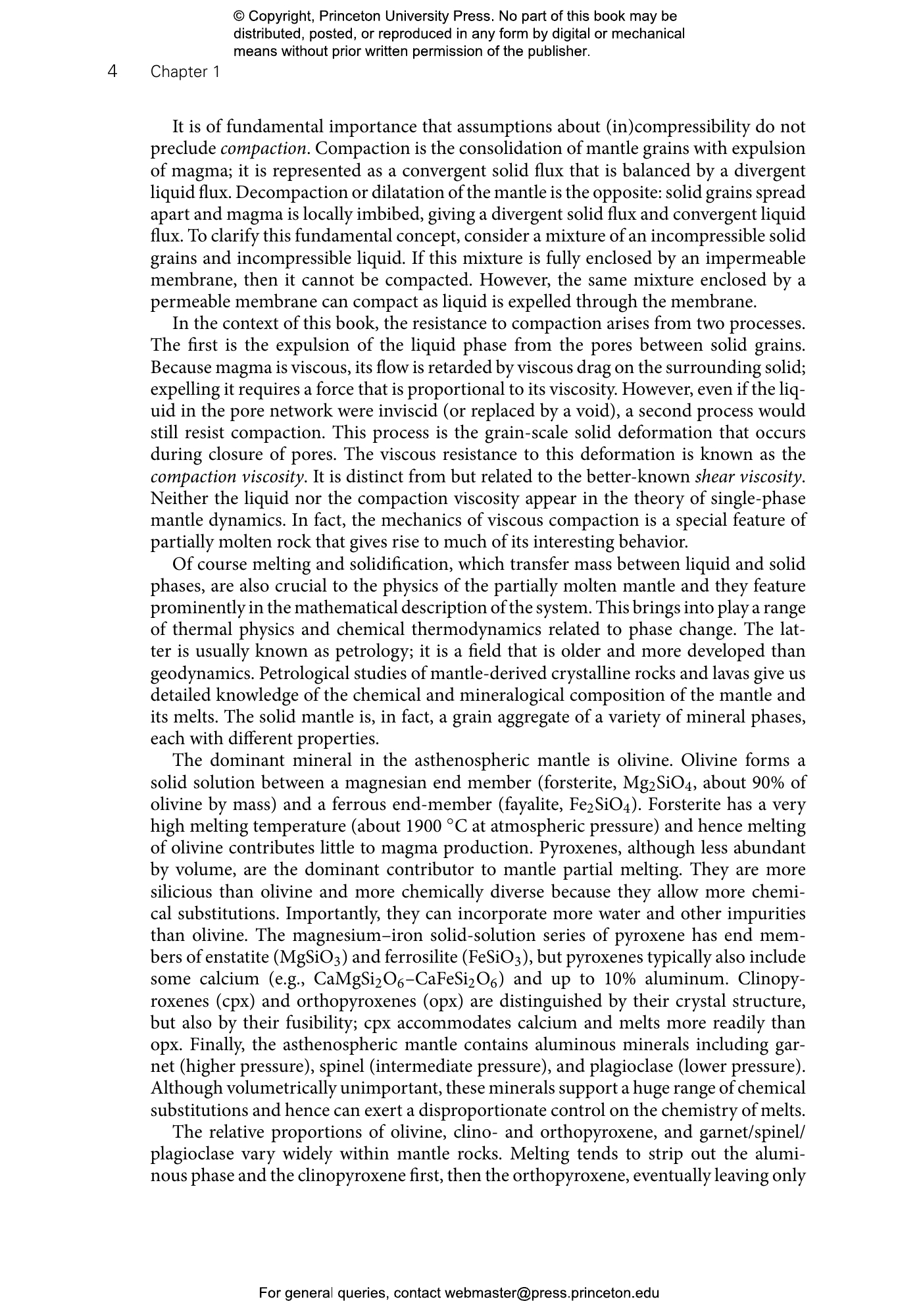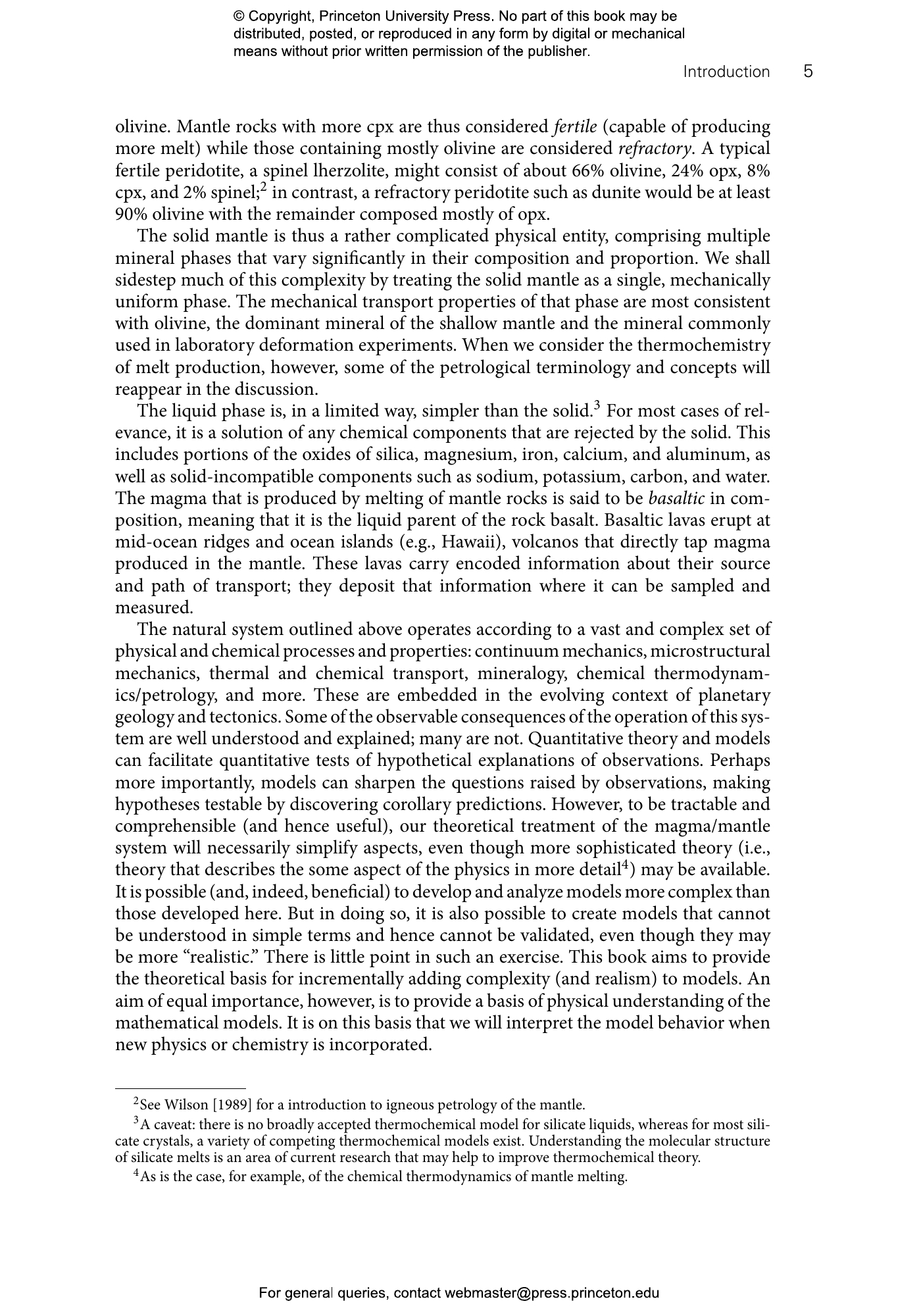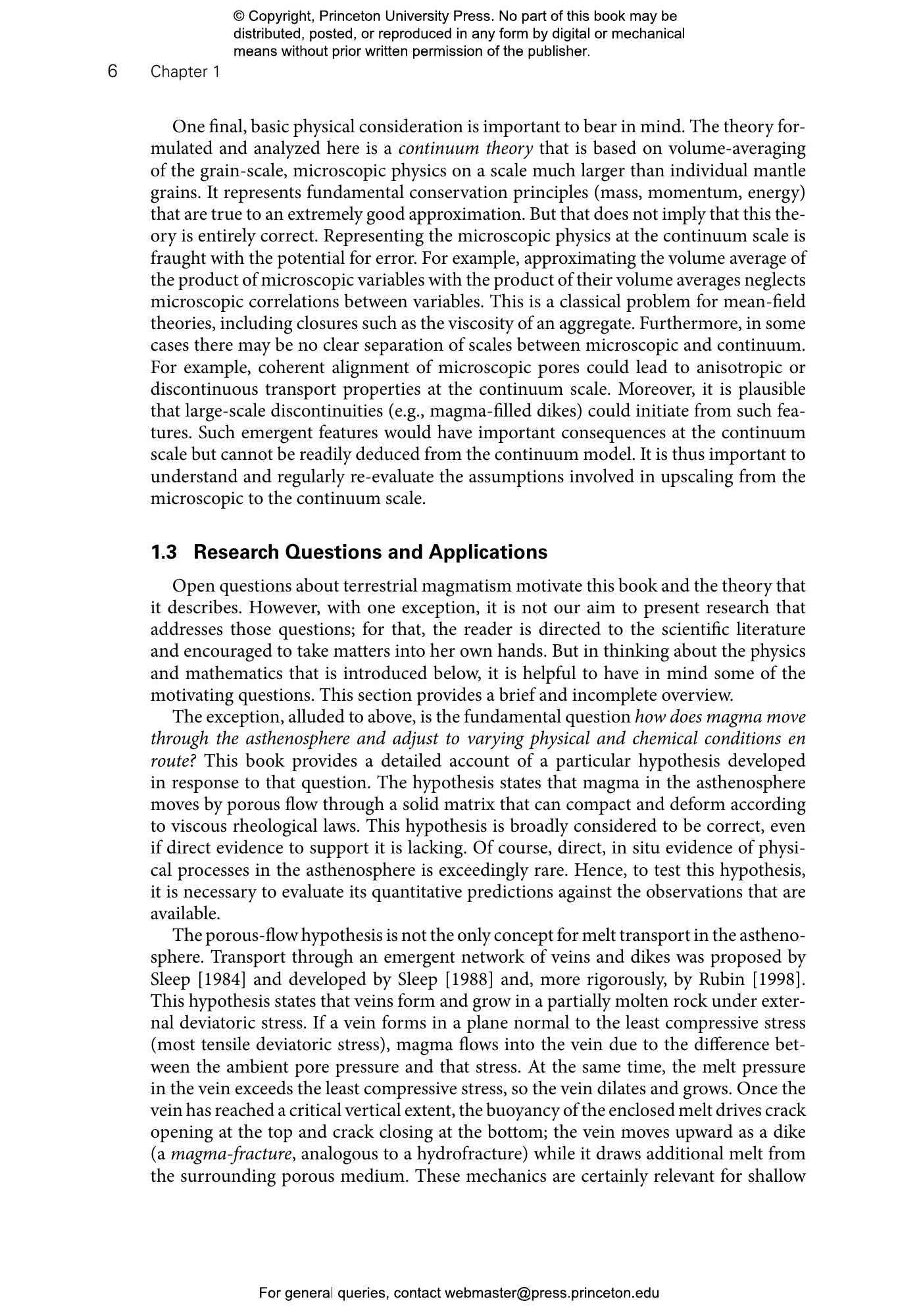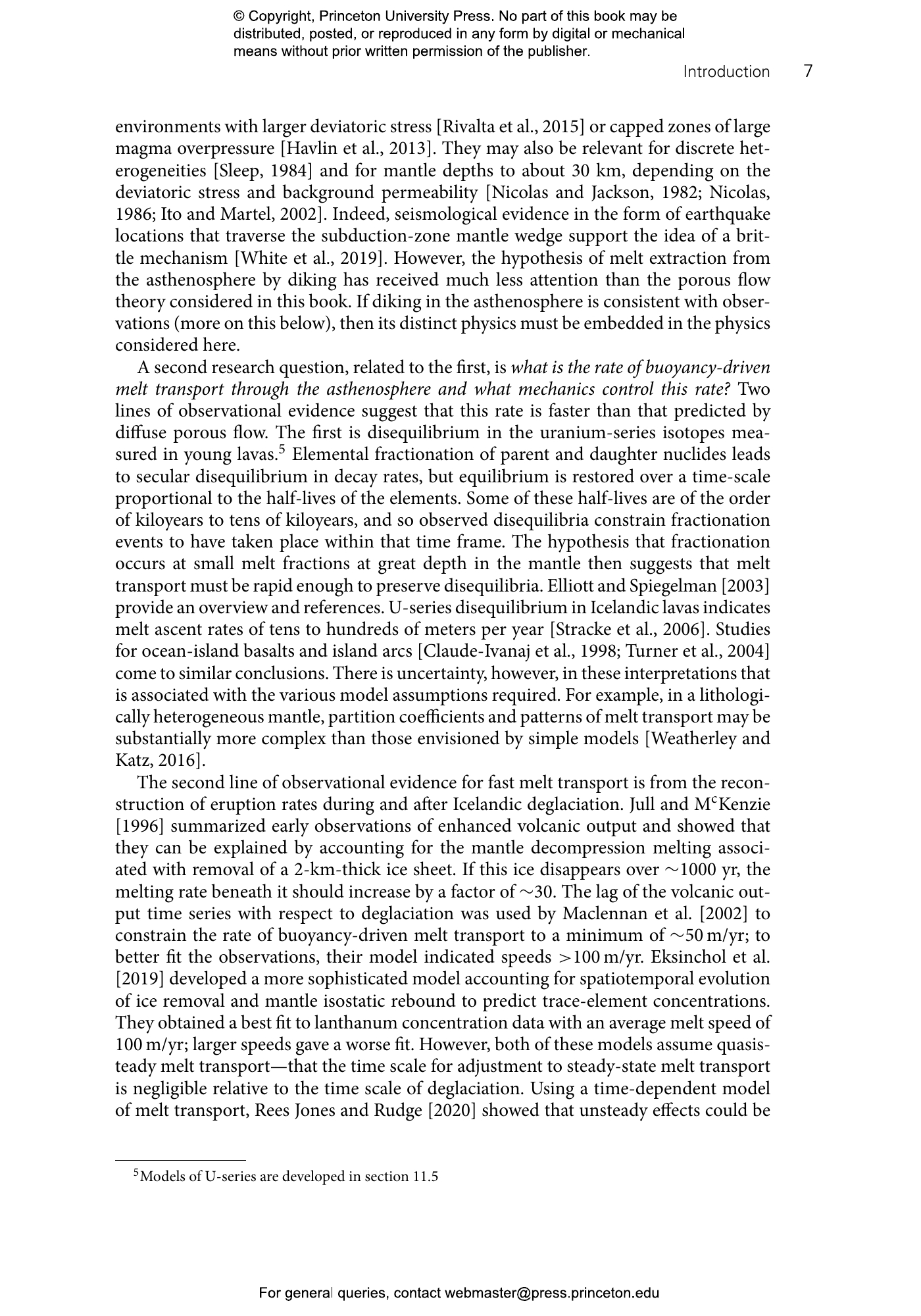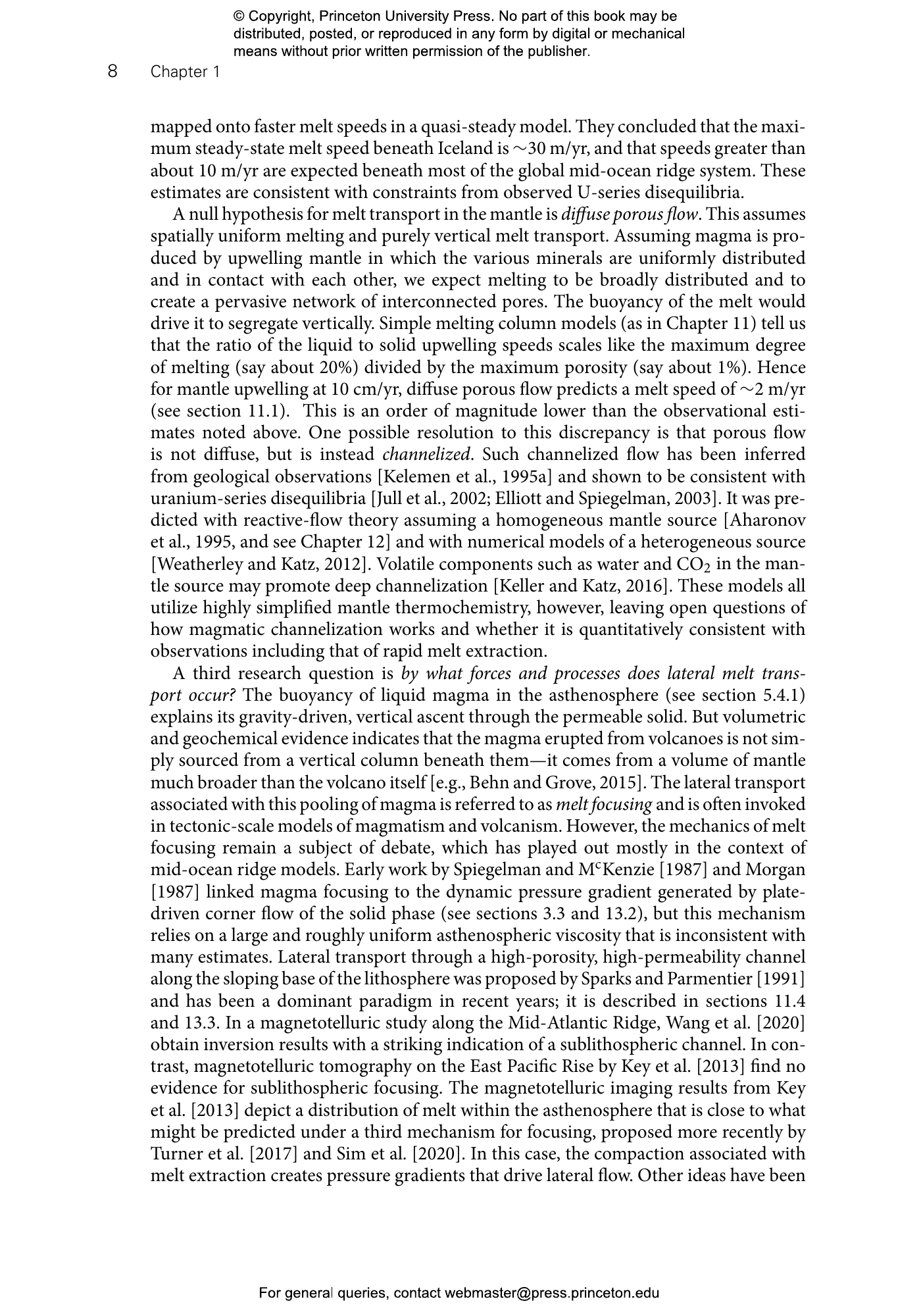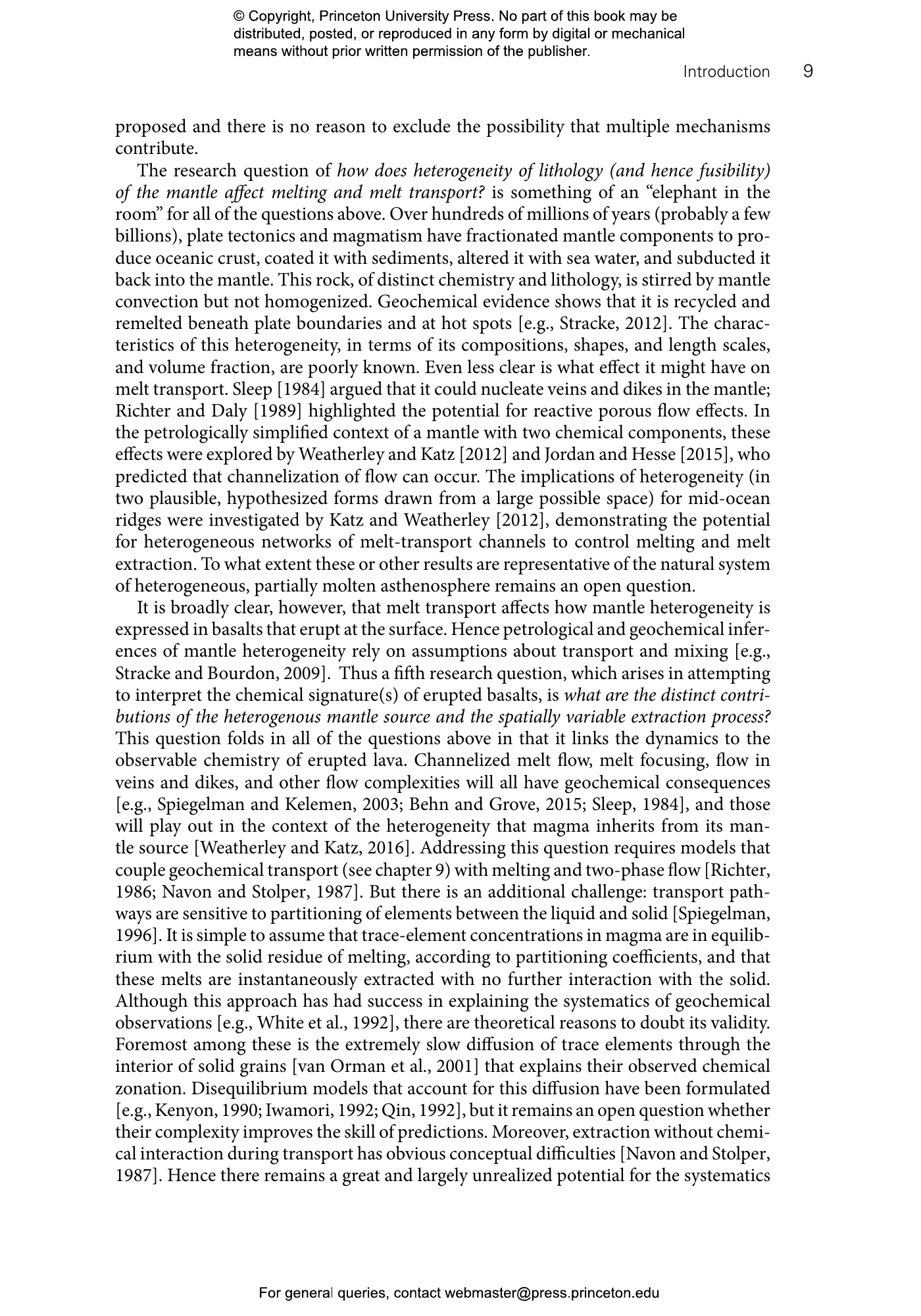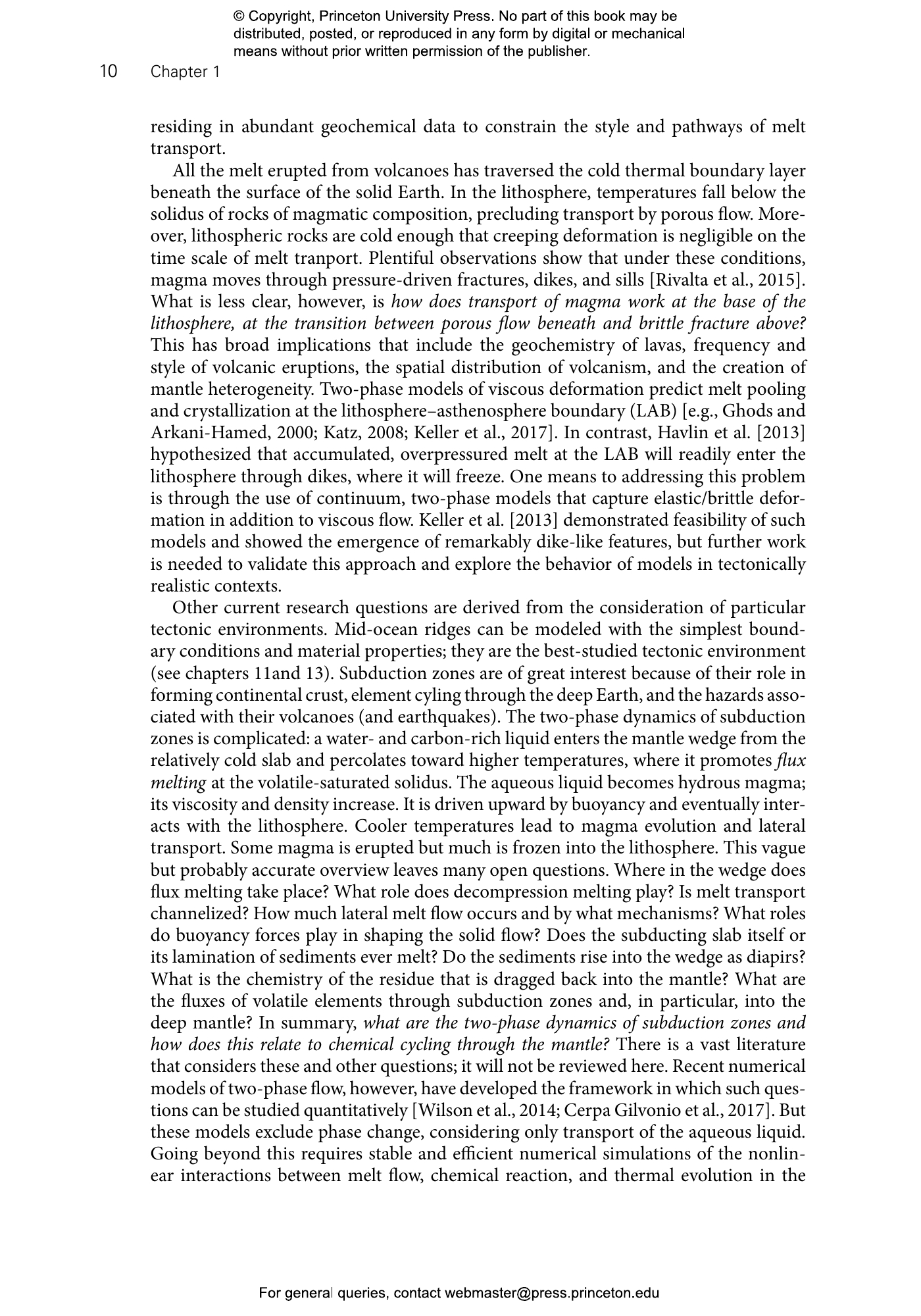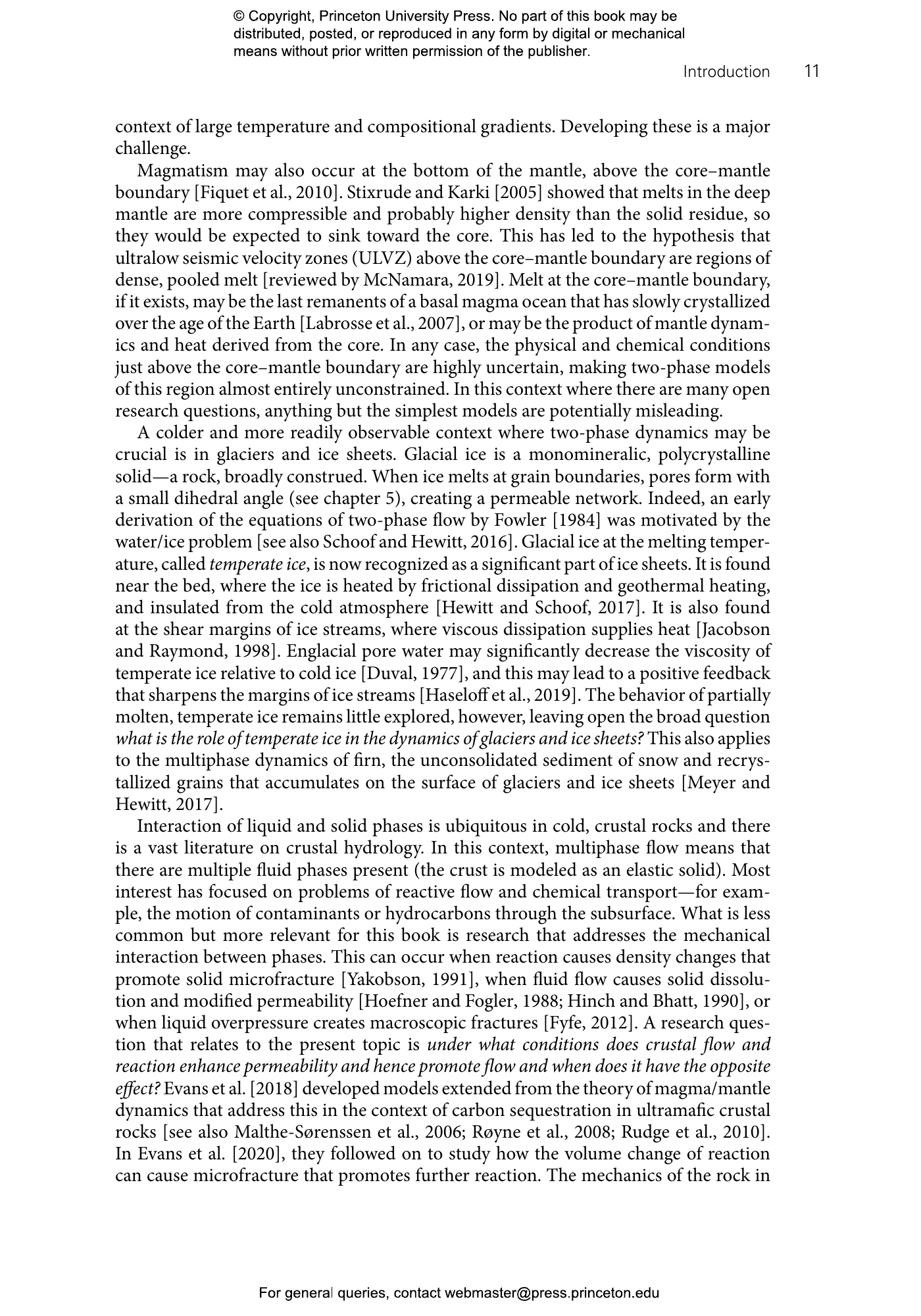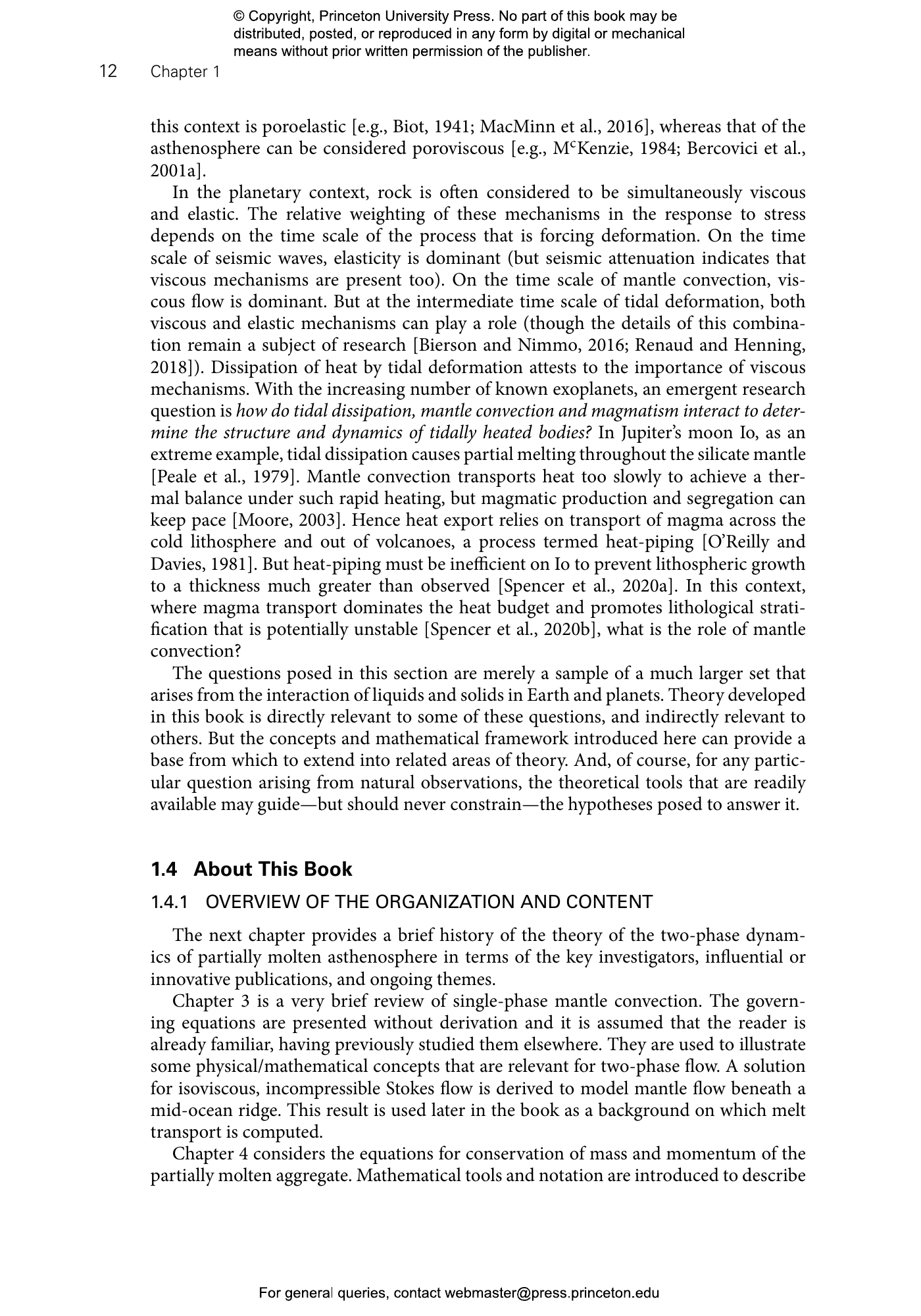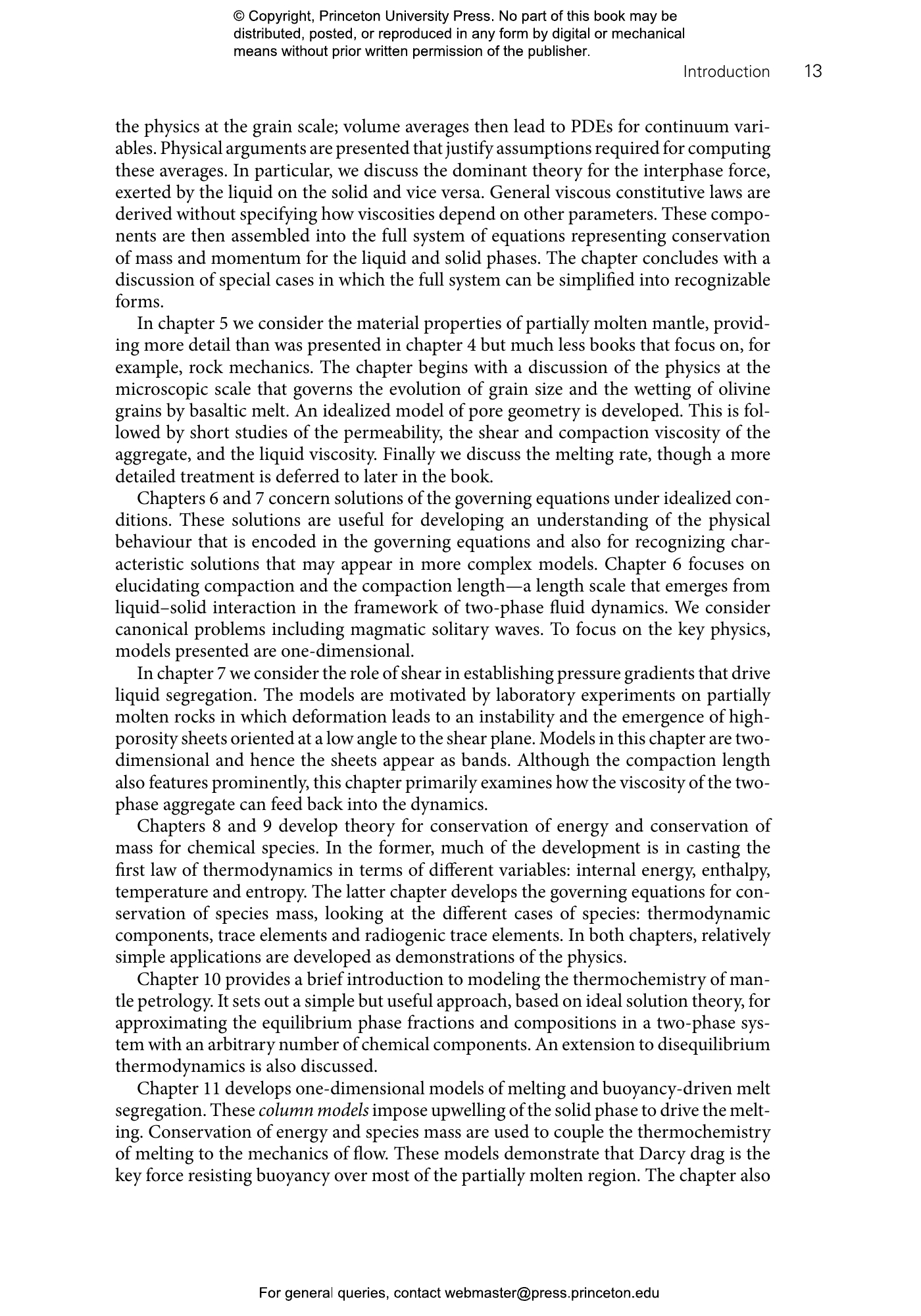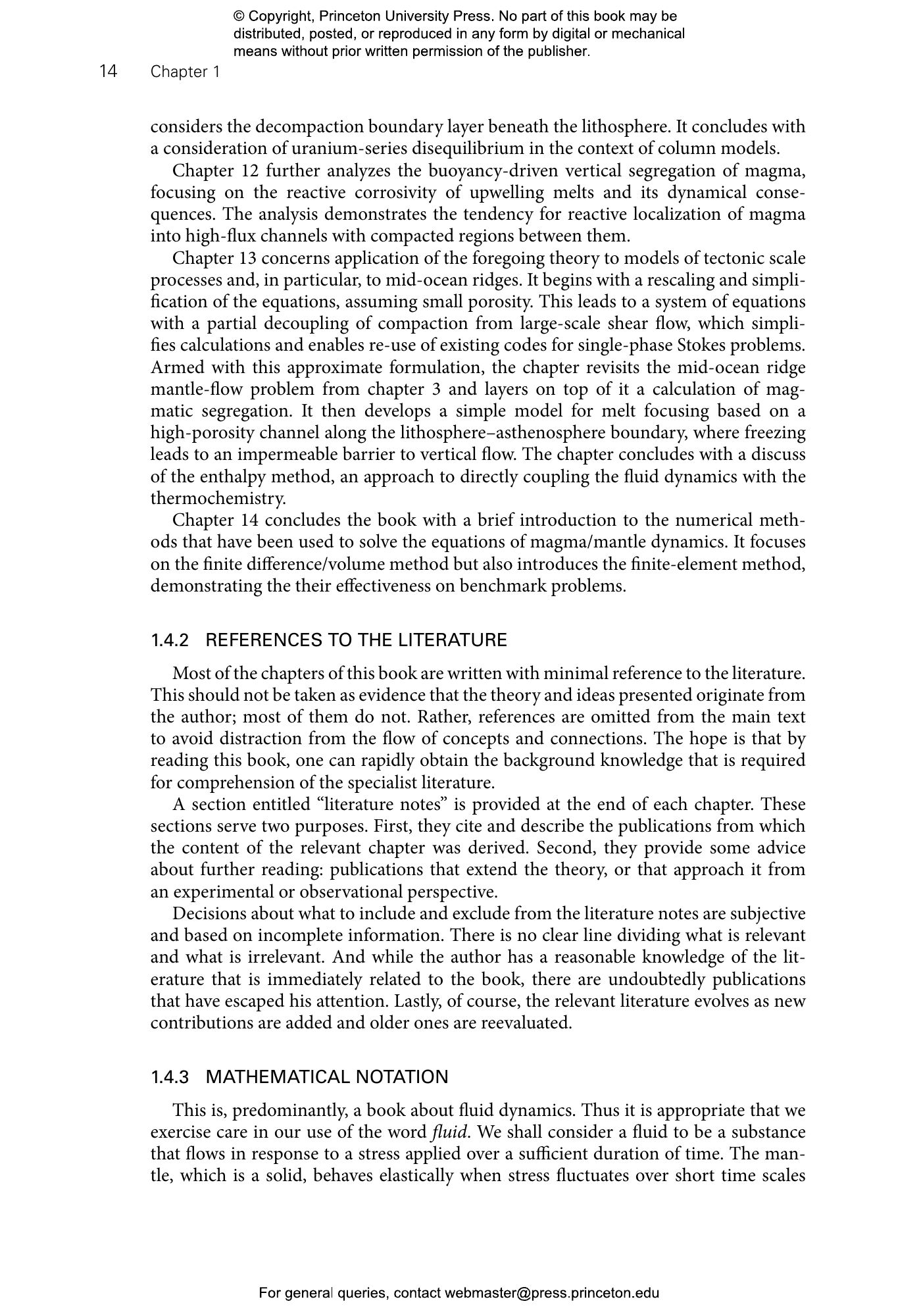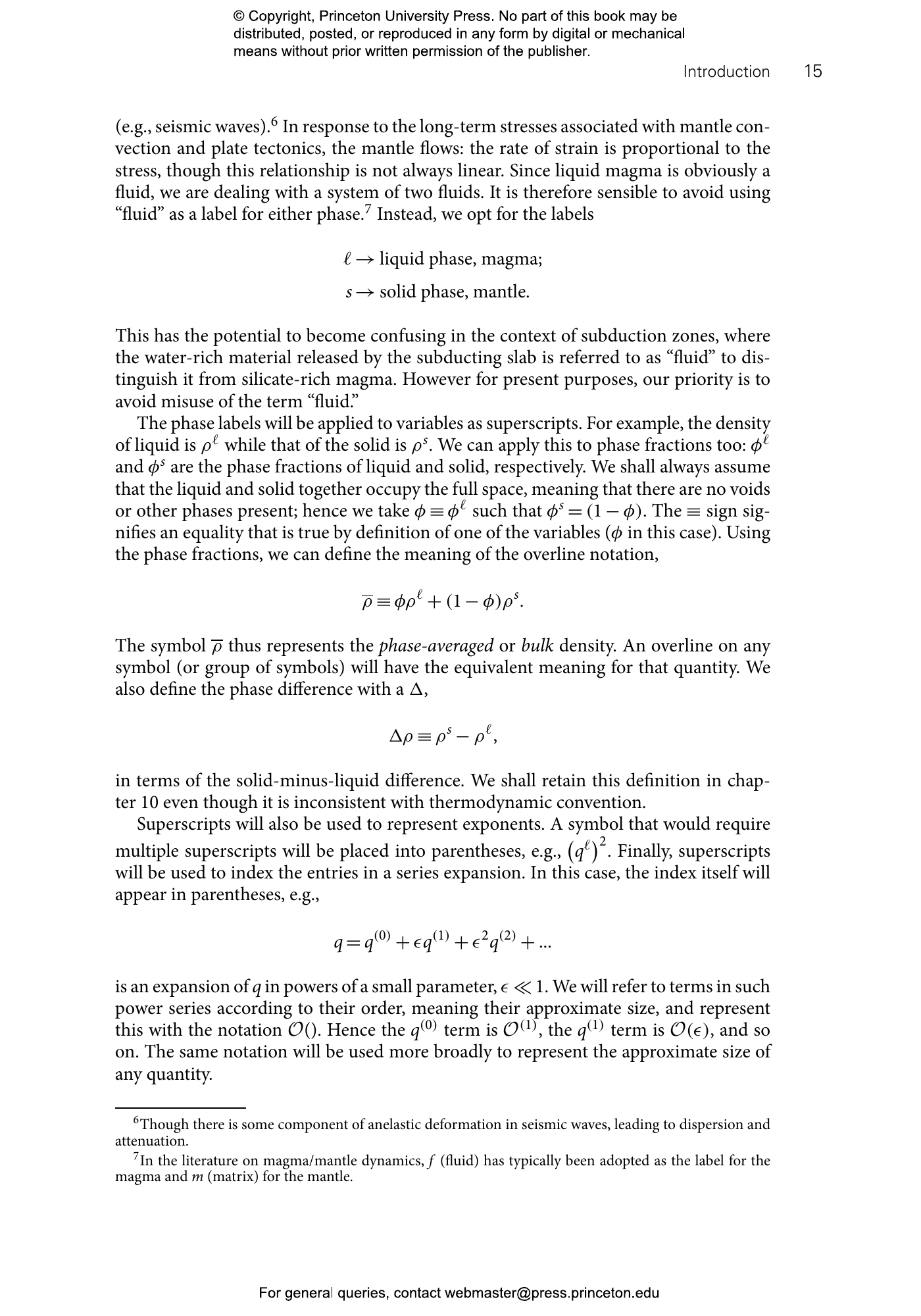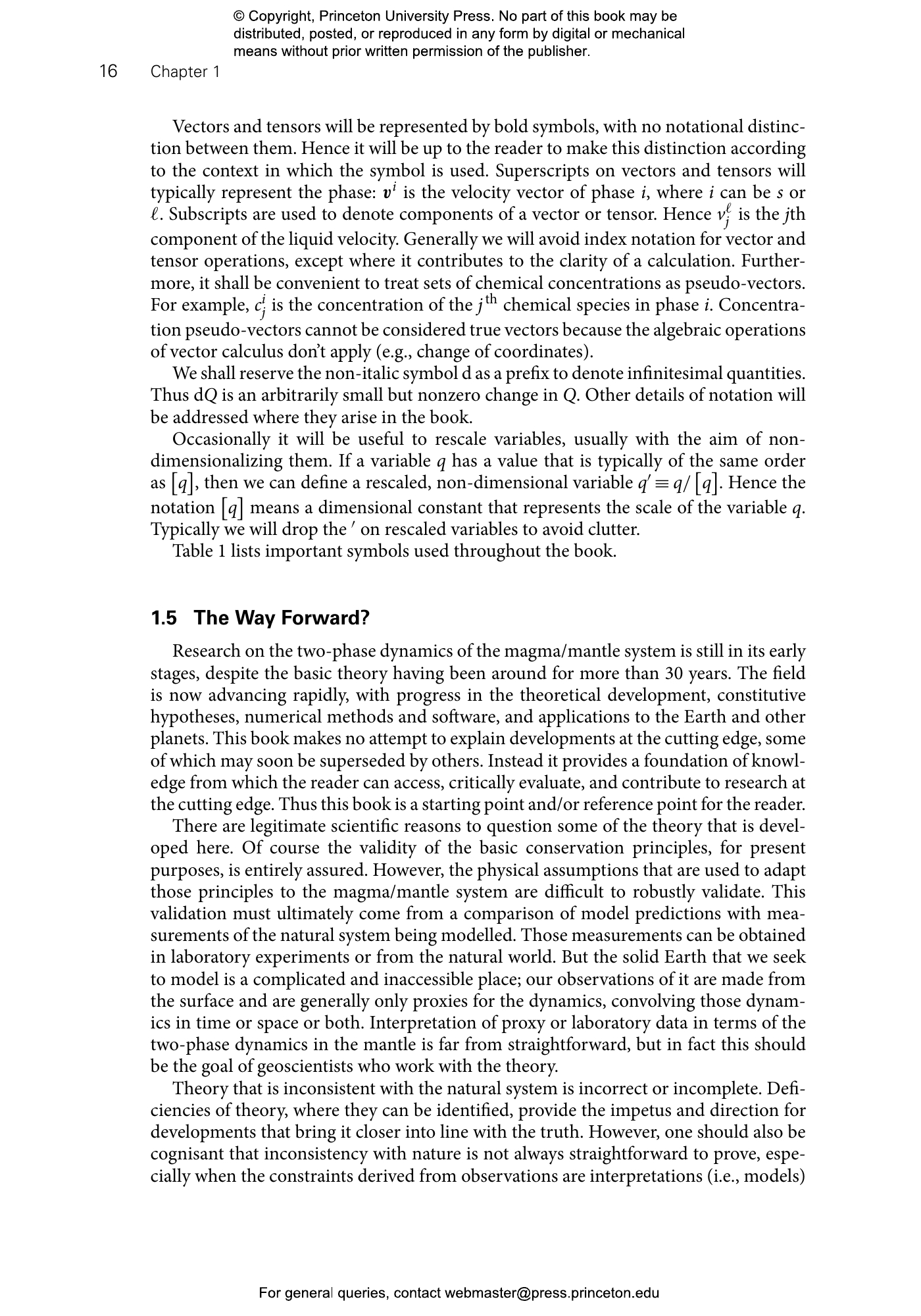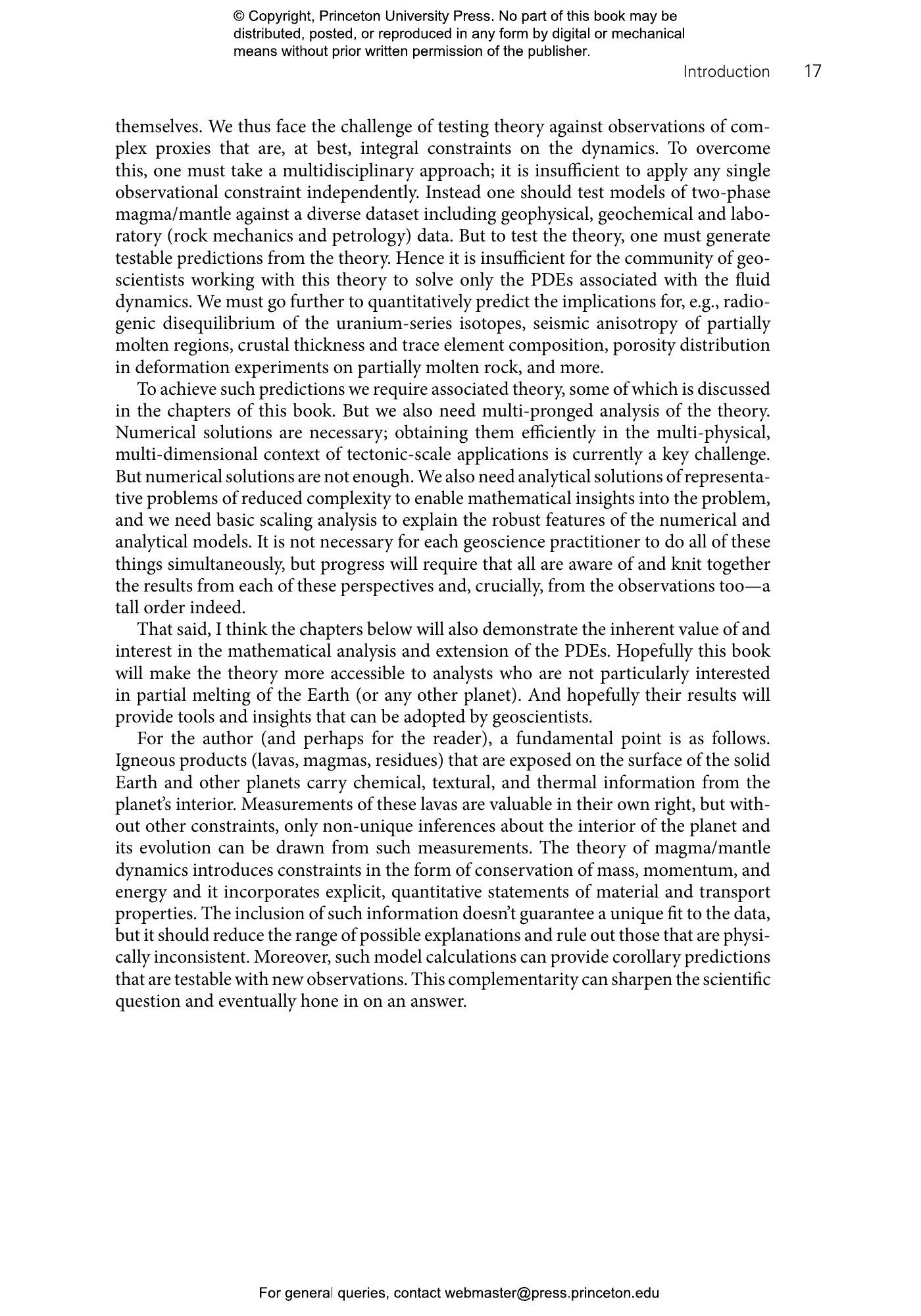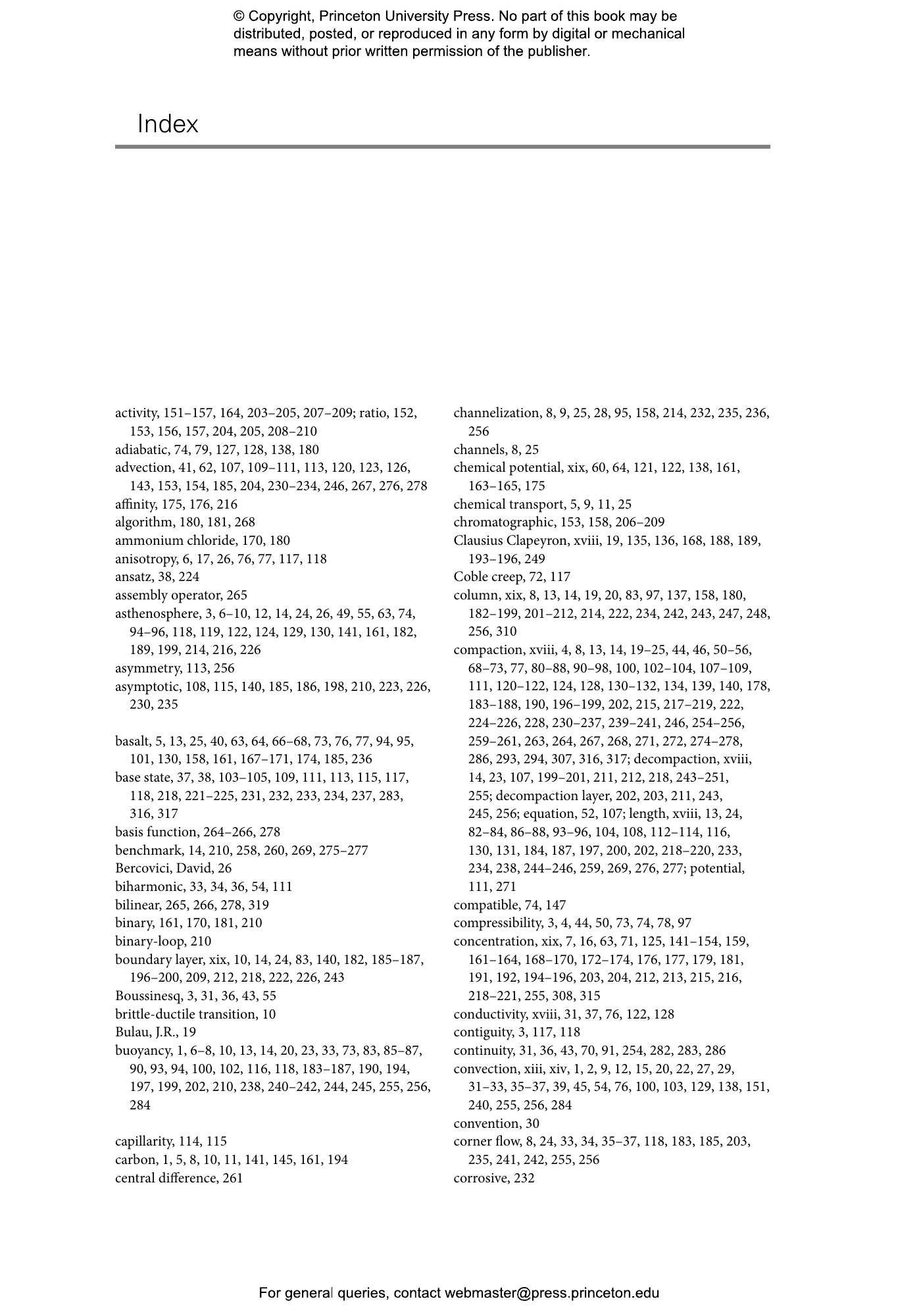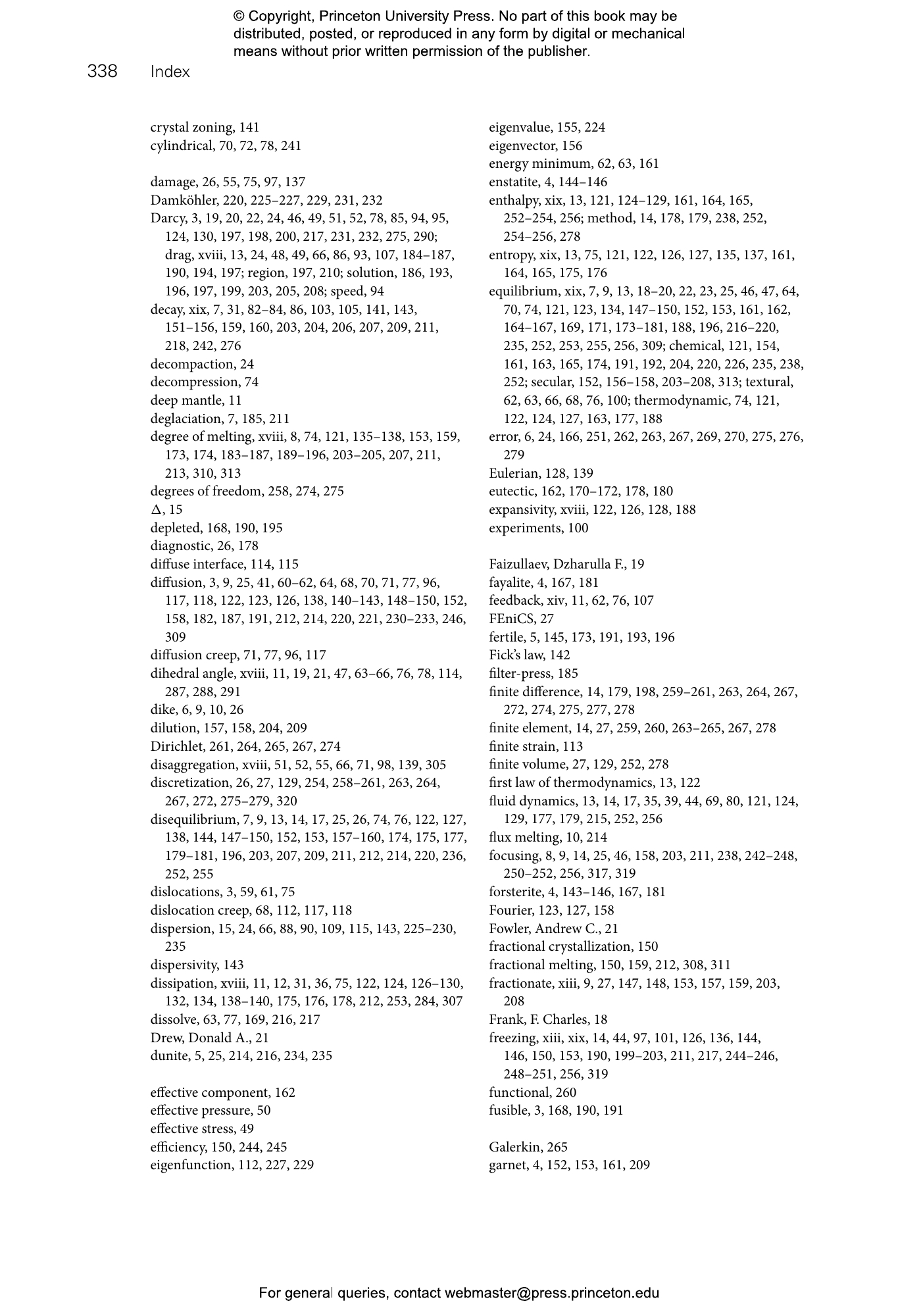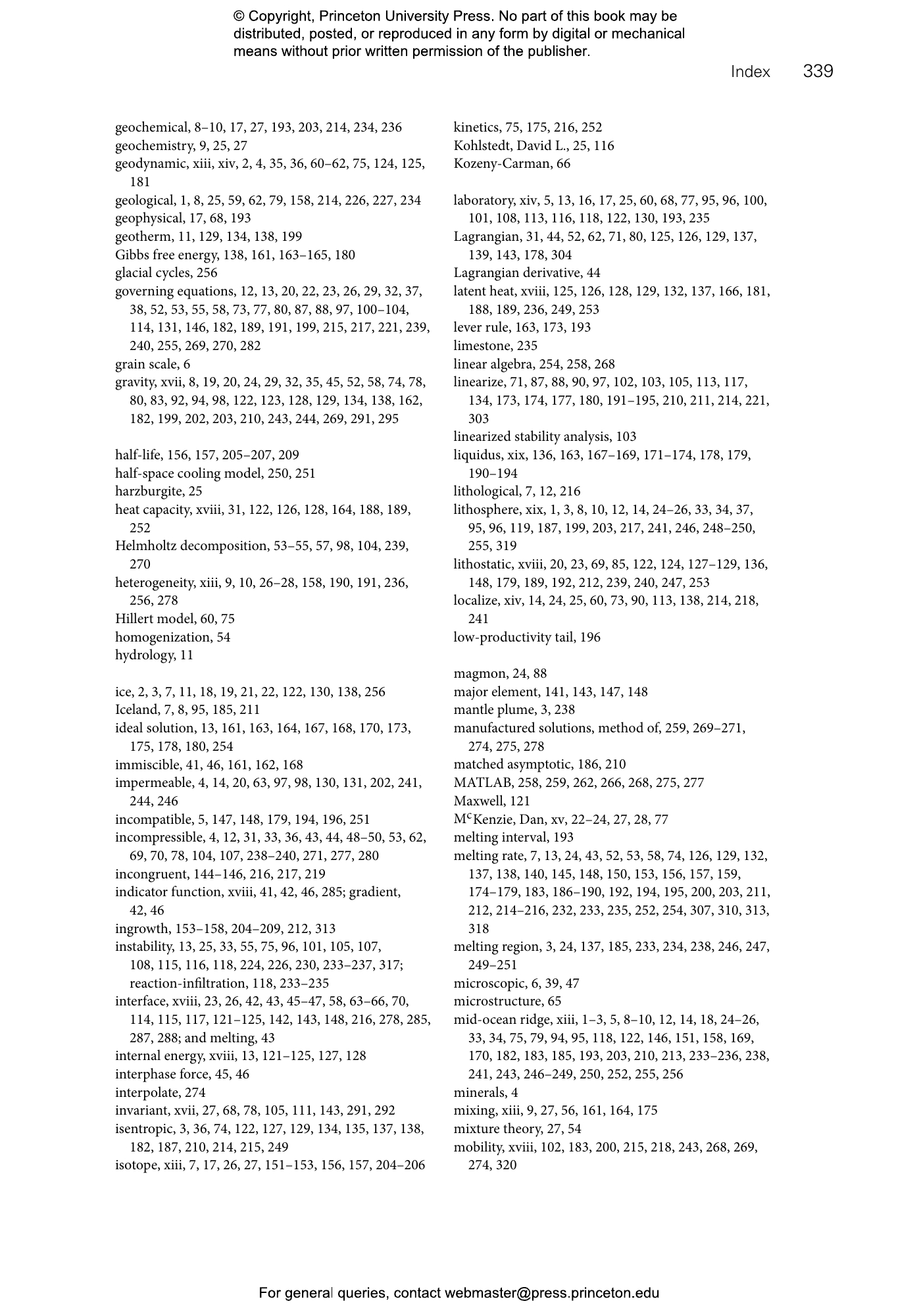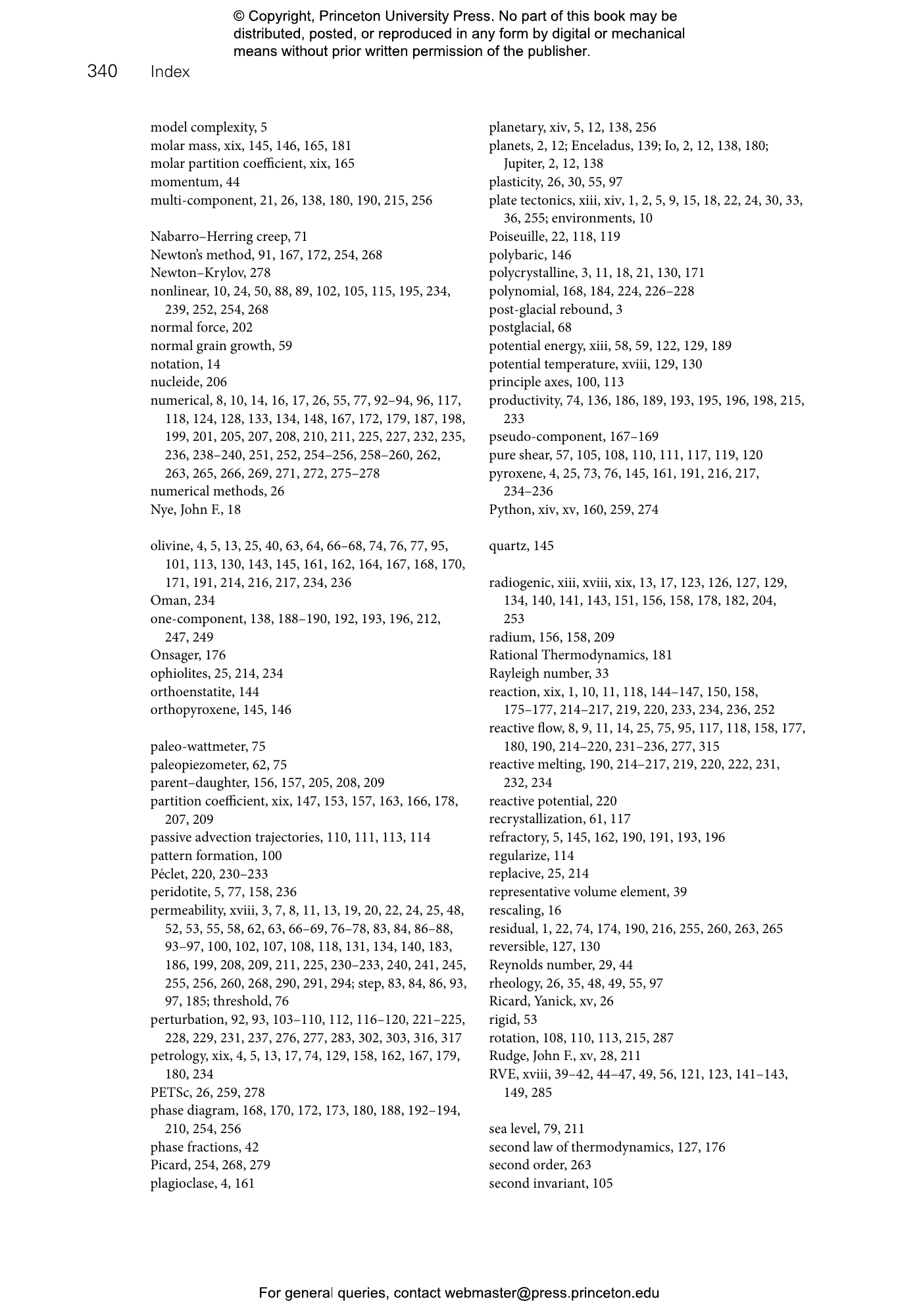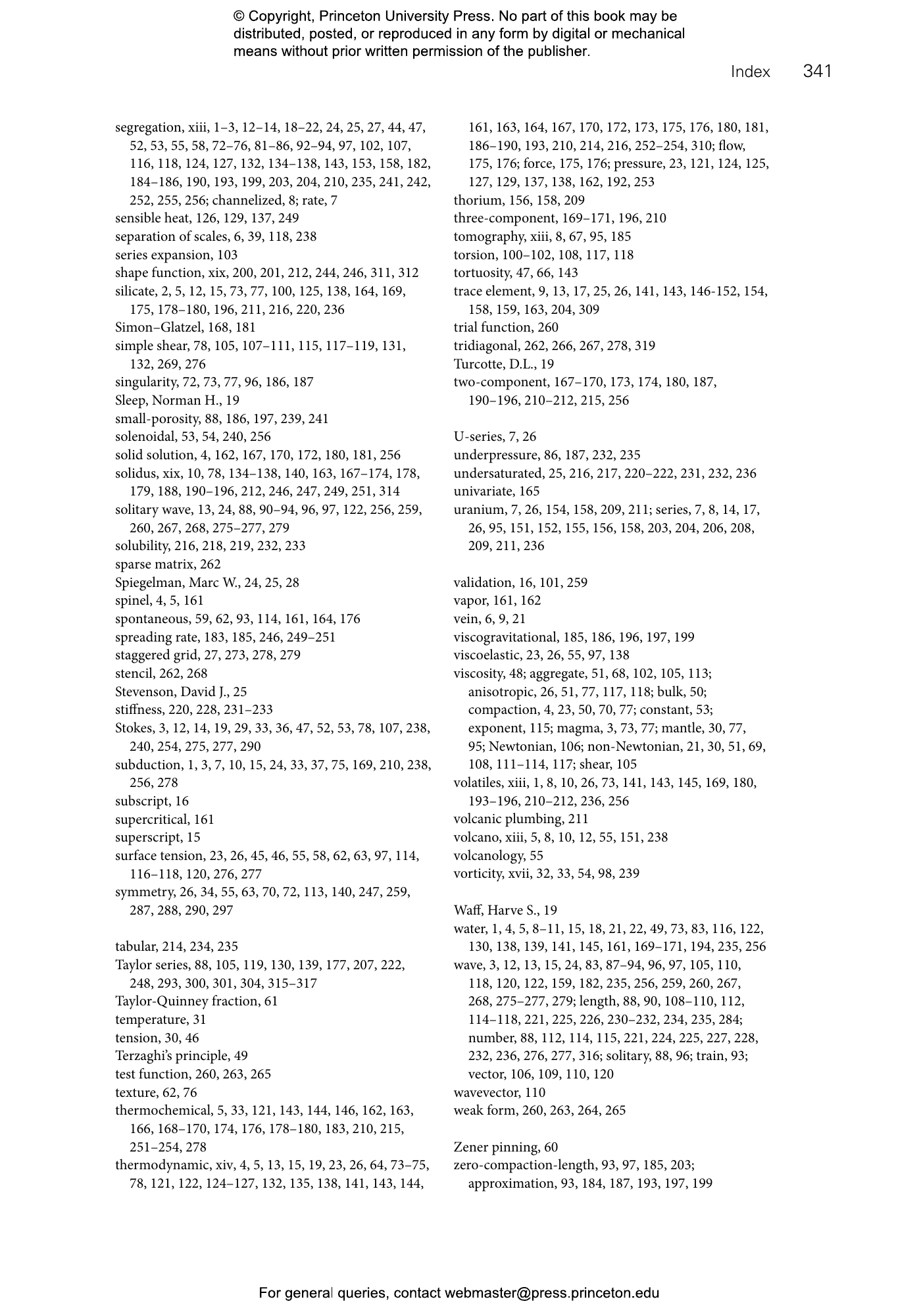The Dynamics of Partially Molten Rock
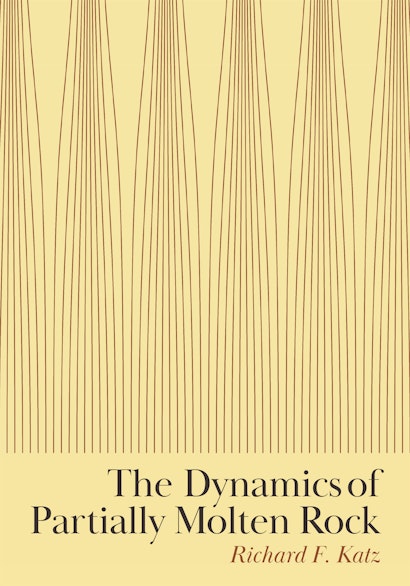

Hardcover
ebook
- Sale Price:
- $55.30/£45.50
- Price:
-
$79.00/£65.00 - ISBN:
- Published:
- Jan 18, 2022
- Copyright:
- 2022
- 69 b/w illus. 7 tables.
- Main_subject:
- Earth Science
30% off with code PUP30
Magma genesis and segregation have shaped Earth since its formation more than 4.5 billion years ago. Now, for the first time, the mathematical theory describing the physics of magmatism is presented in a single volume. The Dynamics of Partially Molten Rock offers a detailed overview that emphasizes the fundamental physical insights gained through an analysis of simplified problems. This textbook brings together such topics as fluid dynamics, rock mechanics, thermodynamics and petrology, geochemical transport, plate tectonics, and numerical modeling. End-of-chapter exercises and solutions as well as online Python notebooks provide material for courses at the advanced undergraduate or graduate level.
This book focuses on the partial melting of Earth’s asthenosphere, but the theory presented is also more broadly relevant to natural systems where partial melting occurs, including ice sheets and the deep crust, mantle, and core of Earth and other planetary bodies, as well as to rock-deformation experiments conducted in the laboratory. For students and researchers aiming to understand and advance the cutting edge, the work serves as an entrée into the field and a convenient means to access the research literature. Notes in each chapter reference both classic papers that shaped the field and newer ones that point the way forward.
The Dynamics of Partially Molten Rock requires a working knowledge of fluid mechanics and calculus, and for some chapters, readers will benefit from prior exposure to thermodynamics and igneous petrology.
- The first book to bring together in a unified way the theory for partially molten rocks
- End-of-chapter exercises with solutions and an online supplement of Jupyter notebooks
- Coverage of the mechanics, thermodynamics, and chemistry of magmatism, and their coupling in the context of plate tectonics and mantle convection
- Notes at the end of each chapter highlight key papers for further reading
